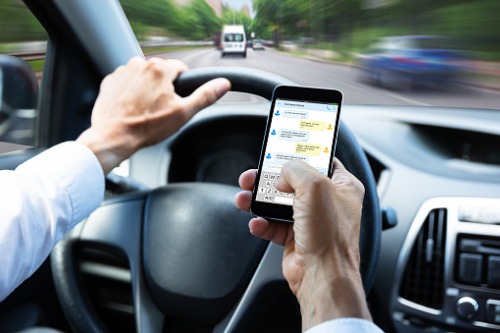

What would it take for you to stop driving distracted? A slap on the wrist, a police fine, a firm telling off by a friend or family member? Alarmingly, for many Canadian drivers, the answer is none of the above. A shocking 43% of drivers who responded to a Desjardins Insurance national survey on distracted driving said the only thing that would stop them from driving distracted would be getting into a motor vehicle collision.
Research from the Traffic Injury Research Foundation (TIRF) shows that one in four fatal crashes in Canada involves some form of distraction. What if that one triggering collision for the 43% of drivers above actually results in someone’s death? That’s a totally unacceptable price to pay to prevent distracted driving on Canadian roads.
“Distracted driving continues to be a critical issue for Canadian road users,” said Zac Stevenson, senior advisor, public relations, Desjardins Insurance. “Our survey results show that 53% of Canadian drivers admit to having driven distracted at some point, despite 98% of them knowing it’s against the law. Still, Canadians seem to believe the problem lies with other drivers. Ninety-three per cent (93%) of drivers said they very rarely drive distracted by a cell phone, and yet 84% said they often see others driving distracted by cell phones. Essentially, there are a lot of disconnects around this issue, and there’s also a common narrative of: ‘It’s not me; it’s you.’
“The most alarming stat to come out of our research was that 43% of drivers said it would take a collision for them to stop driving distracted. At Desjardins Insurance, we have the mentality that one collision, one injury, or one fatality, is one too many, because most motor vehicle collisions are preventable. To see that 43% of drivers say it’s going to take a collision for them to stop driving distracted is very concerning.”
When asked about the factors that distract them while driving, half of respondents (49%) to the Desjardins national survey said external surroundings, 45% said cell phone related distractions (texting, calling, emailing, social media etc.), and 41% said changing the vehicle’s console / infotainment system. When asked about cell phone use specifically, 42% said they use it to look at GPS apps, while 37% said they use their phone for calls and text messages while in their car.
“Cell phones remain a huge issue, but the situation is more complex than that,” Stevenson told Insurance Business. “Drivers’ external surroundings and in-vehicle infotainment systems are also key distractions. At the end of the day, there’s one strong message that all Canadians need to be made aware of, which is: stay alert, stay focused, and be safe on the roads. Any second that a driver takes their eyes off the road is a second that they’re putting other people, including themselves, in danger.”
In an effort to prevent distracted driving, the Desjardins Insurance Ajusto app signals when drivers are distracted by their phones. To this day, this feature was used to help drivers become more aware of the risks of distracted driving, but it hadn’t been used to calculate their driving score. The insurer has now decided to address the issue directly by monitoring cell phone related distractions via the telematics app and using it as a factor in determining their drivers’ scores. This was launched first in Quebec with rollouts planned in Ontario in the near future.
“This shows our commitment to the cause,” said Stevenson. “We’ve made prevention a part of our business model because we truly believe distracted driving is a major issue. It’s an unacceptable driving behaviour in the same way that alcohol or drug-impaired driving is. That’s the message that the broker force can share with clients. Anything that anybody can do to make distracted driving become socially unacceptable will help in the long run. If you see friends or family riving distracted, call them out on it.”
